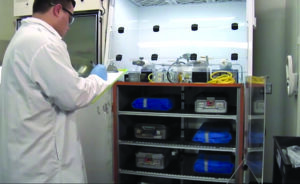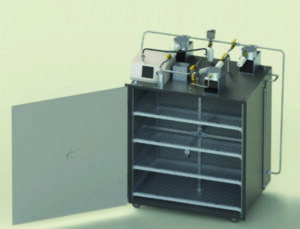Sterility Maintenance Study
Challenge
In hospitals, proper storage and handling of sterilized surgical instruments is imperative to maintaining sterile conditions in the operating room. Sterile packaging systems (SPS) are used to maintain the sterility of surgical instruments and primarily consist of two types: reusable rigid metal containers or single-use flexible sterilization wrap. These packages must maintain a barrier between their sterile contents and the outside world, especially when challenged by dynamic air movement caused by temperature shifts, transport, HVAC systems, etc. Any damage or improper use of these packages could result in contaminated surgical instruments and potentially a hospital-acquired infection.
Solution
As part of a study funded by Halyard Health, ARA developed and performed a bioaerosol test method challenging rigid containers and wrapped instrument trays with both airborne bacteria and dynamic air movement due to vacuum cycling. The experiment was designed to test the sterile packages using conditions that better replicate what is experienced in actual hospital environments compared to previous research.
Results of the study included significant findings about the two SPS types tested. Only 13 percent of rigid containers, new and used, prevented contamination under the established test conditions. Further, rigid containers that were in use for several years (> 5 years) were significantly more likely to experience bacterial ingress than new, unused rigid containers, indicating that rigid containers may become less effective the longer they are in use.
However, there was some good news for sterilization wraps. Under the same test conditions, 100 percent of trays wrapped in sterilization wrap remained sterile and free of bacterial ingress. These findings validate those of a 2006 study done in Germany. In this case, a majority of the rigid containers tested also failed to prevent contamination under set test conditions.
There is no standard test for performance validation of sterilization packages, leaving it to manufacturers to define what test they want to use for FDA clearance. We hope this study will lead to the development of a standard method using a dynamic bioaerosol test, providing a greater and more realistic challenge to sterilization packages.



